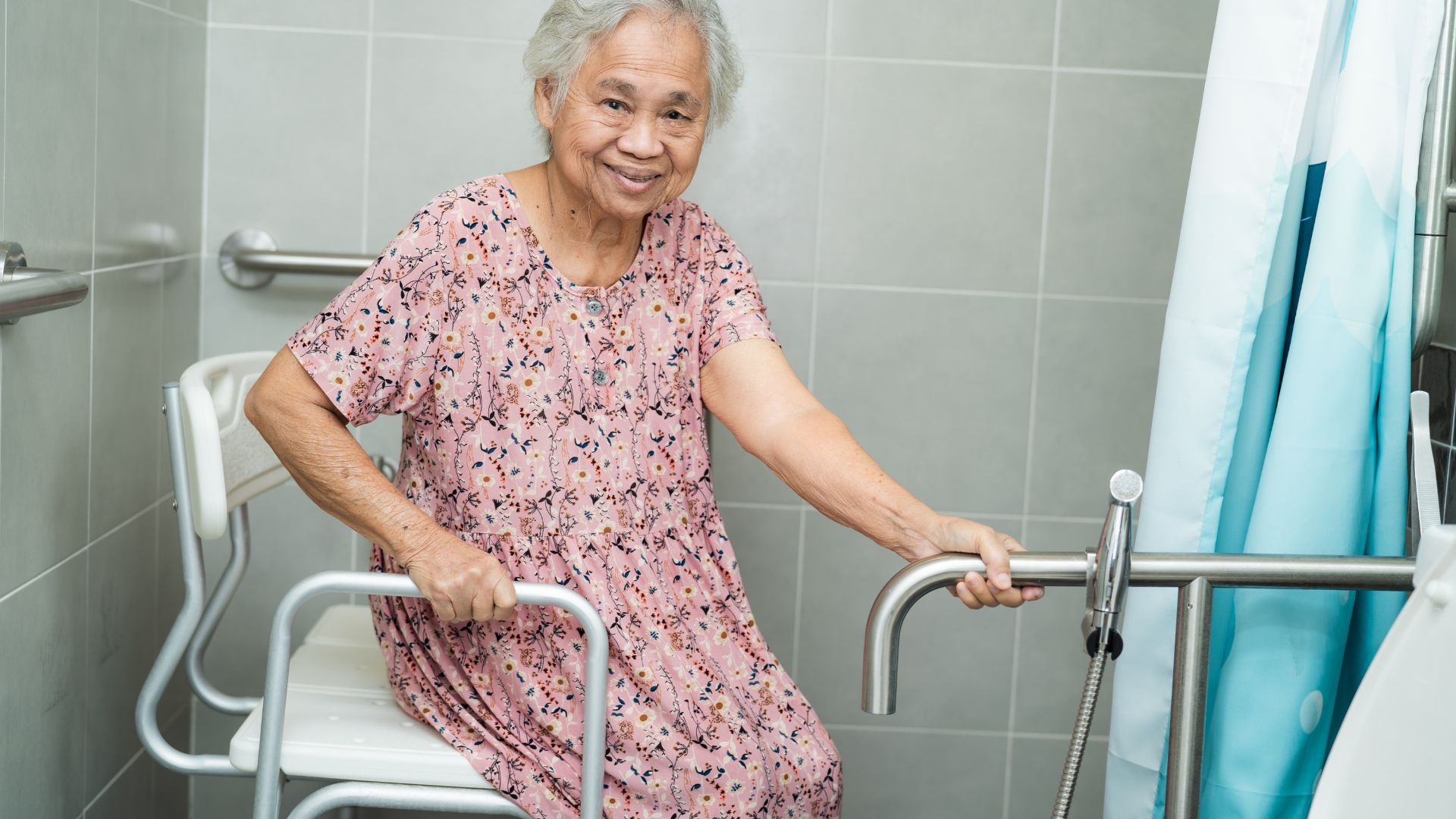Feeling confident and walking independently are huge factors in older adults maintaining independence at home. Falls can be detrimental to this independence and represent a huge economic cost to the healthcare system. An estimated 20–30% of older Canadian adults (> 65 years old) living in the community experience one or more falls each year.[i]
Physiotherapists and occupational therapists are trained in providing comprehensive assessments, as well as home safety assessments. Based on these assessments, they can recommend modifications for the home environment aimed at reducing the risk of falls.
Both physiotherapists and occupational therapists play a significant role in fall prevention, especially for individuals who are at an increased risk of falling due to various factors, such as aging, medical conditions, or disabilities. In this blog we will look at some key ways in which physiotherapists and occupational therapists can contribute and collaborate to prevent falls.
Table of Contents:
- Comprehensive assessment
- Home safety assessment and modifications
- Assistive devices
- Physical training
- Cognitive training
- Education
- Community engagement
- Conclusion
Comprehensive Assessment
Both therapists conduct a thorough assessment of an individual’s physical, cognitive and sensory systems, as well as environmental factors that may contribute to the risk of falling. This assessment helps identify specific fall risk factors to help tailor interventions accordingly.
A physiotherapist will focus on aspects of balance including strength, flexibility, sensory and gait assessments. An occupational therapist will look at how cognition, vision and sensory factors affect falls risk.
Home Safety Assessment and Modifications
To ensure home safety, therapists will look and measure areas around the home including stairs, entranceways and turning radius in areas such as the bathroom and kitchen. Both physiotherapists and occupational therapists can recommend and implement home modifications to create a safer living environment. This may include installing railings, grab bars, handrails, non-slip flooring, and removing tripping hazards.
Assistive Devices
Ensuring clients are safe while doing daily activities such as bathing, dressing and cooking will help to minimize their risk of falls.
Physiotherapists assess the need for assistive devices such as canes, walkers, or wheelchairs and provide training on their proper use to enhance mobility and reduce the risk of falls.
Occupational Therapists assess the safety and accessibility around the home, making recommendations for bathroom equipment such as bath benches or chairs and appropriately placed railings in the shower. Occupational therapists may also prescribe aids to help with dressing such as a long handed reacher or kitchen devices such as modified cutting boards or adaptive utensils.
Physical Training
Physiotherapists design personalized exercise programs to improve an individual’s balance, strength, and flexibility. These programs help individuals maintain their independence and reduce the likelihood of falls.
They evaluate an individual’s walking pattern to identify issues that may lead to falls. The physiotherapist will then provide gait training and correction techniques to ensure safe and efficient walking. Working on strengthening the right muscles and maintaining joint mobility can help prevent muscle weakness, joint stiffness, and pain, all of which can contribute to falls.
Through a thorough assessment, physiotherapists can identify aspects of balance that need to be targeted for the individual. This will help to guide exercises and therapy aimed to improve balance and stability.
Cognitive Training
For individuals with cognitive impairments, occupational therapists can work on memory, attention, and decision-making skills to reduce the risk of falls associated with confusion or poor judgment. Occupational therapists can also collaborate with healthcare providers to review an individual’s medications and help ensure they are not causing side effects that could increase the risk of falls.
Education
Both physiotherapists and occupational therapists educate individuals and their families about fall risk factors and prevention strategies. This includes raising awareness about the importance of proper footwear, hydration, and other safety measures including slowing down, setting timers and knowing when to take breaks. Therapists also provide education to clients on the importance of maintaining a home exercise program and routine to prevent falls.
Community Engagement
Occupational therapists may help individuals reintegrate into the community, ensuring that they can safely participate in social activities and engage in meaningful occupations without the fear of falling. Working together, therapists help individuals find safe and accessible programs that helps clients work on meaningful goals.
Conclusion
Collaboration with a multidisciplinary team is the most successful approach to falls prevention in the home and community.
Occupational therapy plays a crucial role in falls prevention by addressing a wide range of physical, cognitive, and environmental factors that contribute to falls. Occupational therapists work to enhance an individual’s overall function, mobility, and safety, ultimately improving their quality of life and reducing the risk of falls.
Physiotherapists are critical in falls prevention by addressing physical impairments, improving strength and mobility, and enhancing an individual’s overall physical function. They provide targeted interventions to reduce the risk of falls and promote independence, safety, and well-being in individuals, particularly those at higher risk for falls.
At Propel Physiotherapy our physiotherapists and occupational therapists have the skill and knowledge in all areas of home assessments and fall prevention. We have experience in working with individuals with a variety of health conditions that can affect their balance and independence. Our therapists can help provide you with strategies and training to help keep you independent and doing the things you enjoy!
Written by

















